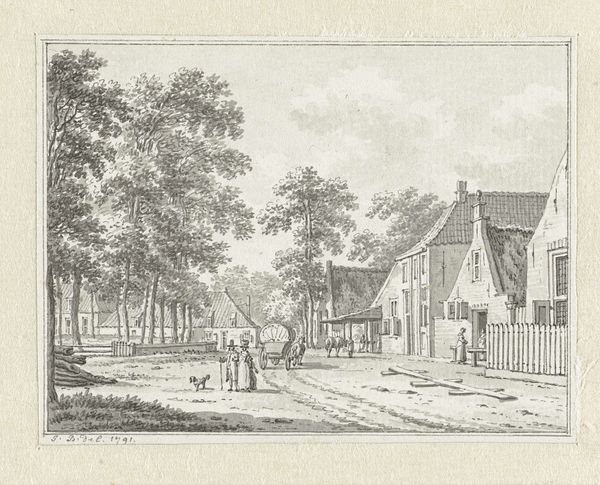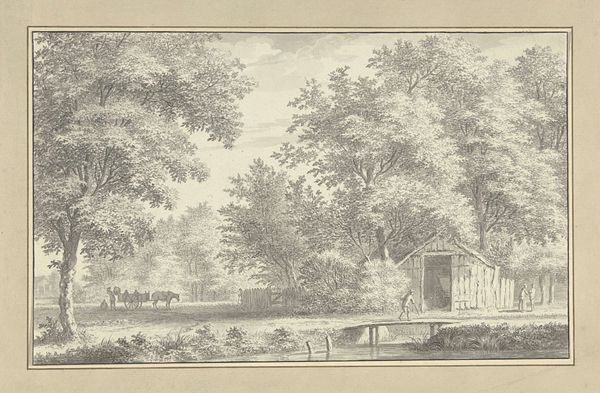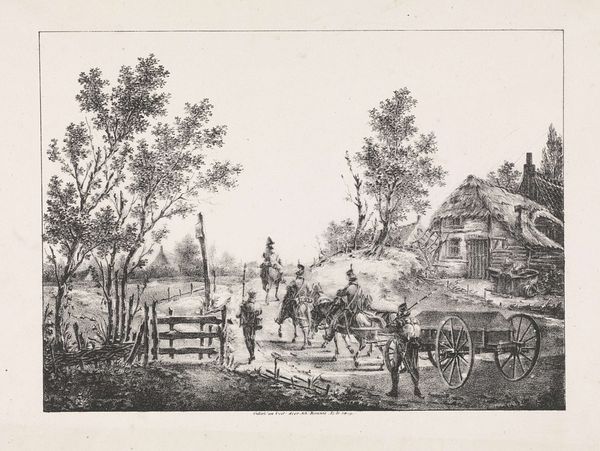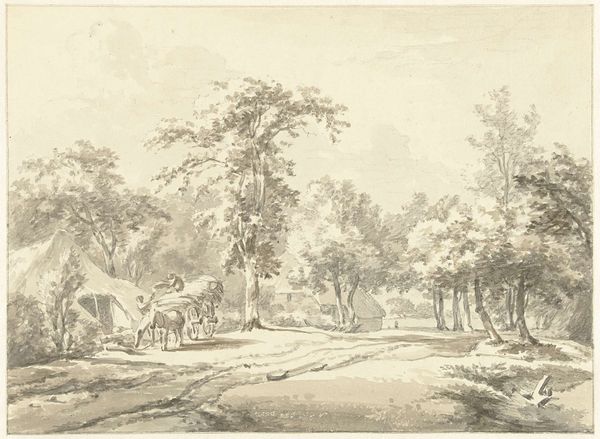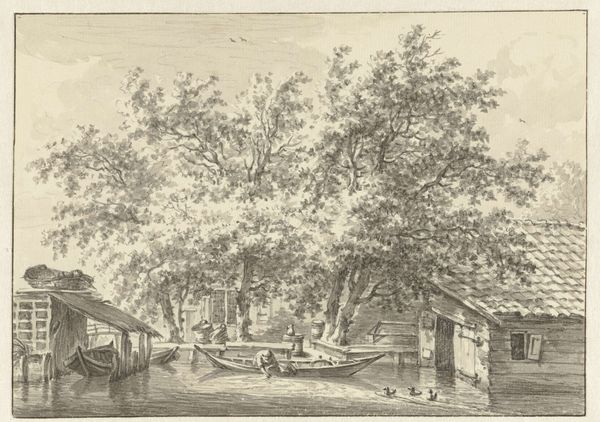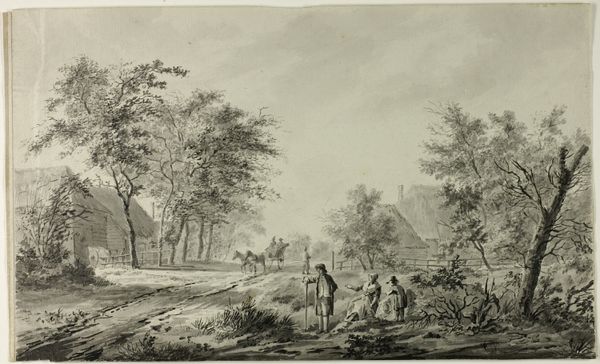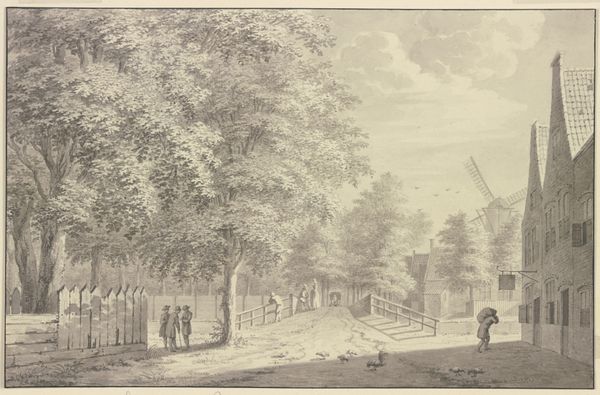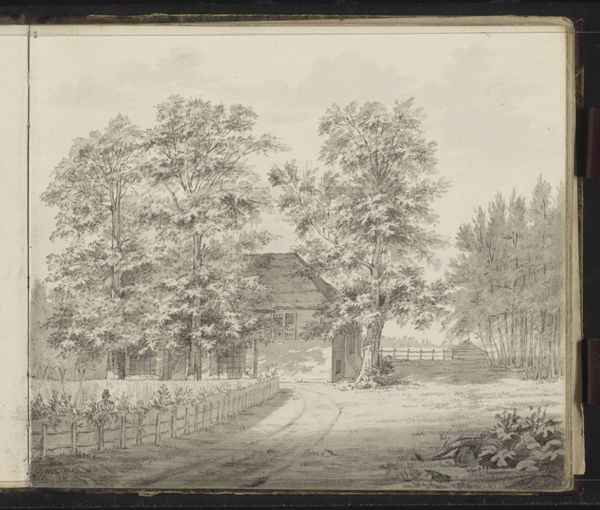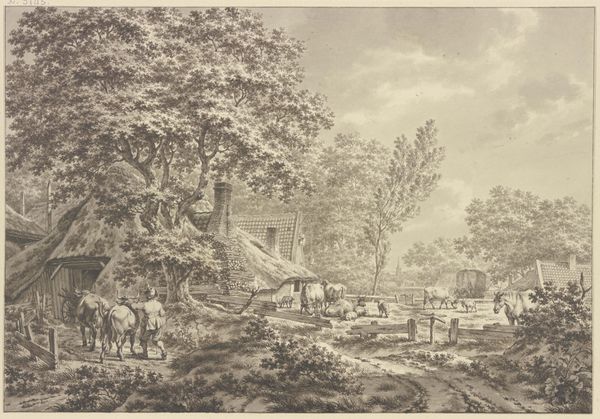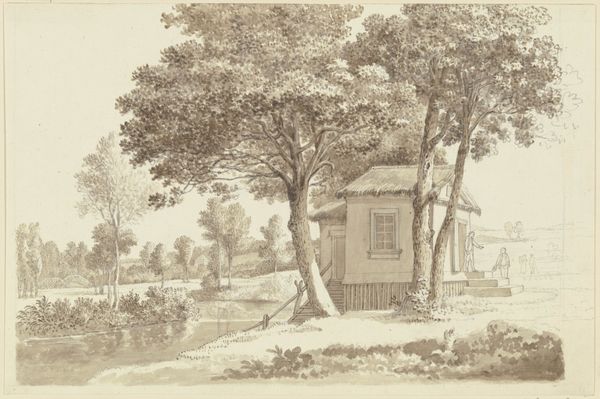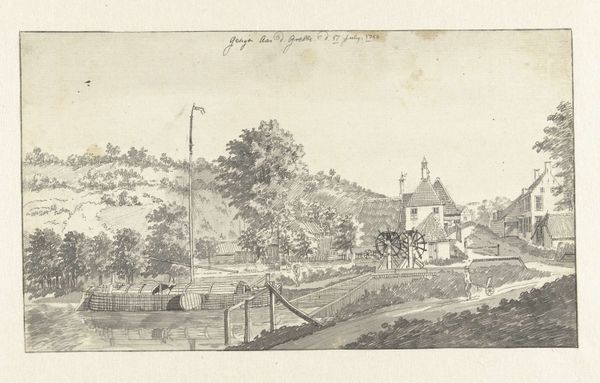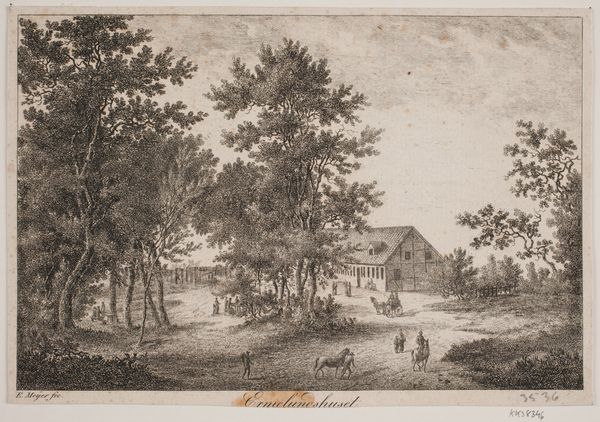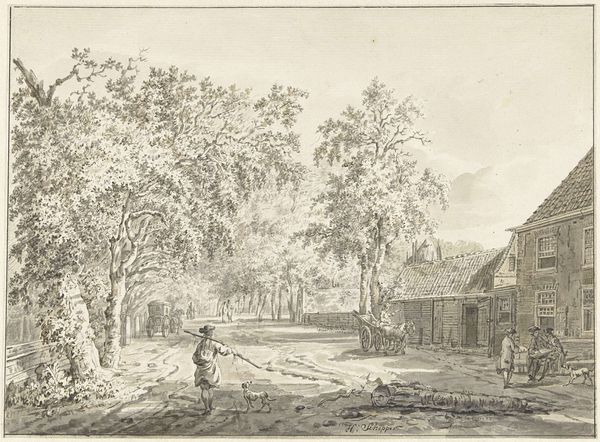
Relais, Avenue des Champs-Élysées, Paris (recto); Scene from the Life of Odysseus (verso) 1812
0:00
0:00
drawing, print, plein-air, paper, ink, ink-drawings, pencil, pen
#
drawing
# print
#
pen sketch
#
plein-air
#
pencil sketch
#
landscape
#
paper
#
ink
#
ink-drawings
#
romanticism
#
pencil
#
pen
#
cityscape
Dimensions: 222 × 297 mm
Copyright: Public Domain
Editor: This is Christoffer Wilhelm Eckersberg’s “Relais, Avenue des Champs-Élysées, Paris,” created in 1812 using pen, pencil, and ink on paper. It strikes me as such a quiet, contemplative piece, especially given its urban setting. What draws your eye in this artwork? Curator: What’s fascinating here is how Eckersberg captures Paris not just as a cityscape, but as a space shaped by social interactions and class distinctions. Look at the figures – their attire, their postures. They speak volumes about the era’s societal norms and the performance of identity. How might the avenue itself contribute to this performance? Editor: I see what you mean. The people are definitely "on display", but I’m not sure how the avenue adds to that. Curator: The Champs-Élysées, even then, was a space of leisure and spectacle, predominantly for the bourgeoisie. Eckersberg's decision to depict this specific location, with its carefully arranged trees and distant architecture, implicitly comments on power, leisure, and visibility. This isn’t just a neutral street scene; it's a stage. Does that resonate with how you initially interpreted its quietness? Editor: That makes me rethink the “quietness.” Maybe it's more like a posed stillness, not relaxed. Curator: Exactly. And consider the “recto/verso” aspect of this work: the other side depicts a scene from the Odyssey. Placing this idealized classical world in contrast with the contemporary Parisian scene opens up questions about societal ideals versus lived reality. How can we draw parallels between these themes of power, travel and social structure that are apparent in both images? Editor: It’s like the artist is juxtaposing ancient narratives of heroism with the everyday performances of the Parisian elite. Very different contexts, but surprisingly similar themes if you scratch the surface. Curator: Precisely! By looking at these pieces intersectionally, we uncover so much more than just a pretty picture. Editor: This has been a revealing experience, noticing social layers in something that I first perceived to be serene and simple. Curator: Indeed. And art provides an amazing historical record through that critical lens.
Comments
No comments
Be the first to comment and join the conversation on the ultimate creative platform.
